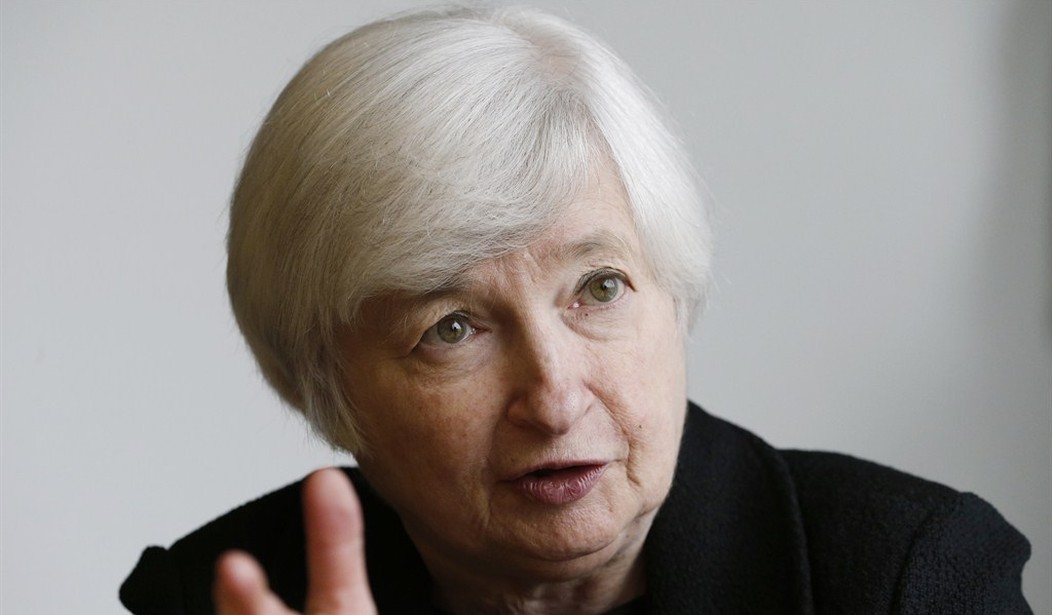Fed Chair Janet Yellen’s recent speech before at a conference on income inequality sponsored by Credit Suisse ruffled a lot of feathers, both on the right and the left of the political spectrum. In the speech she cited data indicating that income inequality in America was the worst it’s been since the great depression, and suggested that a continuation of the trend would have dire consequences on consumer spending and hence future economic growth.
Advertisement
Pundits on the right were quick to pounce on Yellen’s analysis. In an interview in the Daily Caller, Heritage Foundation economists Stephen Moore and Joel Griffen pointed out that income growth among the middle class had greatly outpaced the top 5 percent form 1982-1997, and argued that if it weren’t for the great recession of 2008, that trend would have continued. Furthermore, they contend, it was the Obama Administration’s own economic policies that have exacerbated income inequality over the past half-decade – essentially by creating a jobless economic recovery driven by asset price inflation that primarily benefitted people whose income is derived from capital gains rather than wages.
But it was perhaps her policy prescriptions – additional government funding for early childhood education, easing the college expense burden, and funding small businesses that earned the most derision from the right. They have pointed out that years of government spending on welfare programs have not yielded significant gains for poor Americans. Rather, they say, it is primarily cultural issues that have kept poor people from achieving economic prosperity.
In a recently released study entitled The 2014 Index of Culture and Opportunity, the Heritage foundation tracked 31 “cultural” indicators – marriage rates, out of wedlock births, teen drug use, religious participation, violent crime, and others. The report then presented them alongside “opportunity” indicators – high school graduation rate, labor force participation rate, job openings rate, etc. The findings were interesting, although not so much the conclusions Heritage drew from them.
Recommended
Advertisement
Perhaps least surprising that marriage rates declined significantly in the ten years (2001-2012) covered by the study. Although marriage rates have trended down since the 1960s, the decline seemed to accelerate during the great recession, declining more than 10 percent during over a ten year period. Over the same period, the unwed birth rate increased by almost seven percent. And yet the overall birthrate declined as well, continuing a trend that started in the 1970’s of low birth rates. Significantly, birth rates have declined precipitously among Latinos and African Americans who in the past had both very high birth rates. Surprisingly, abortion rates are way down too. So, as a nation, we are getting married less often and having fewer babies, but a greater percentage of the children that are born, are born out of wedlock. The obvious question here is whether these trends are the result of changes in the opportunity structure, or whether they are in fact affecting the level of opportunity in the country.
These issues are harder to tease out, particularly because the Heritage study focuses on “opportunity” rather than outcomes. It focuses, for example, on job openings, which have gone up less than half a percent over the decade (with a major downwards spike in the recession years). It also looks at labor force participation, which has declined. But it does not capture income growth, household formation, nor does it account for consumer trends such as home buying.
Advertisement
And yet, in the face of data that seems less than conclusive (either way), the Heritage study does not shy away from making broad policy prescriptions. It credits joblessness with family breakdown, and suggests that the reason lower-skilled workers have not worked is because they do not have a work ethic. This is not supported in the data that it presents at all, which does not mean that is not true. In fact the data do not show an uptick in divorce rates that would be expected to accompany a decline in low skilled worker employment. Divorce rates are mostly flat over the period covered by the study.
In choosing a ten year period in which there was a major recession (the second most severe on record) – an economic downturn from which we are still recovering, it is hard to determine whether longer term “cultural” factors are a cause or an effect of the availability of economic opportunity. The study would have been more robust had it focused instead on family formation in the five years before and after the recession. Furthermore, in making the case for “cultural” factors, the study does not address the relationship between the decline of marriage rates and the decline of birth rates. Surely, that points to a significant cultural trend as well. If people are waiting longer to both get married and become parents, it suggests that they are rational actors – in other words they are not having children that they cannot afford to raise.
Advertisement
The debate is still open as to what cultural adaptations will help America get back on track economically. Anecdotal data suggest that household formation plays a significant role in the raising of children. It would perhaps be helpful to take a look at factors such as “resiliency” – that is, the ability of two-parent families to withstand economic disruptions vs. the survival of single parent households. Finally, the notion of dependency -- the refusal of individuals to become productive because of disincentives caused by government assistance (the welfare effect) seems to have declined as well. People receiving welfare, housing assistance, and almost all forms of government welfare seem to have dropped over the decade, and the trend is down precipitously over the past twenty years.
If anything, Americans seem to have adopted a culture of “optimization” rather than a culture of dependency. That is, they are delaying marriage and household formation until absolutely necessary. Marriage is not seen as a cultural requirement per se, but as a functional arrangement in which people prefer to raise children. It seems that even married couples are better able to manage family planning without resorting to abortion.
So the question again, is whether cultural or structural factors are to blame for the growing economic inequality in America. The answer is probably that it is a bit of both.
Advertisement

























Join the conversation as a VIP Member